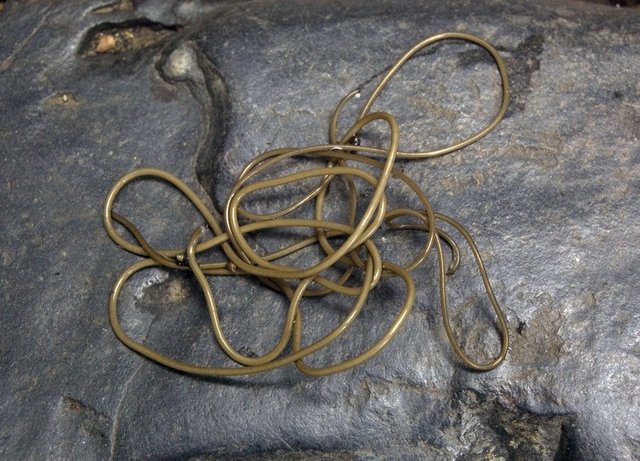Hairworm organism

In the olden days, people thought that the so-called horsehair snake originated from horsehair that has feeling in the water.
But scientists today have shown us that these organisms are nighter horse nor snakes but I counted among the members of the nematomorpha small phylum.
Many people had believed that this type of one family looks somewhat like the hairs of a horse and they are about 6 inches in length, black or brown and as well seem to be thick.
They live in almost everybody of Freshwater and are often found in the drinking trough. Observation has shown that this particular type of worm can outgrow in areas they have never been found before. Studies documented that reasons why hairworms show this character of development owns to the fact that their larvae grow as parasites in insects and the adults emerge full-grown from where they reside in the insect's host.
Now having this in mind we can assume that they are carried into a pond or stream by heavy rain or through the help of their hosts when they approach the water.
If care is not carried out, one can mistakenly refer the hairworm to a class of the phylum Nematoda because they look like roundworms in structure.
The adult is free-living and this feature marks their life history unique, unlike the parasitic nematodes.
Although this feature is insignificant as the adults in many cases lack a mouth and even those with mouth probably do not feed. So we better refer to the free-living adults as the reproductive stage and it may last for months sometimes.
The female hairworm lays eggs in long egg strings which she attaches around the water plants. The larvae that hatch have a spiny proboscis using which they bore their way into the body of an aquatic insect larva.
Till now, experts are yet to understand fully the next stages of hairworm, although we can get grown-up ones in the body of land battles, grasshoppers, and crickets.
To explain how they're transferred to these organisms. Possibly, they move to the land host when they're matured, and are eaten by beetles; or the first insect host may die and its parasitic hairworm larva escapes and bore their way into the second host.
While in the body of the second host, they mature into adults which then return to the water to mate and lay eggs.


I used to think they nematodes until now that i see it.
Nice work.
Nice article. I can't imagine what an insect must feel like infected with a nematode